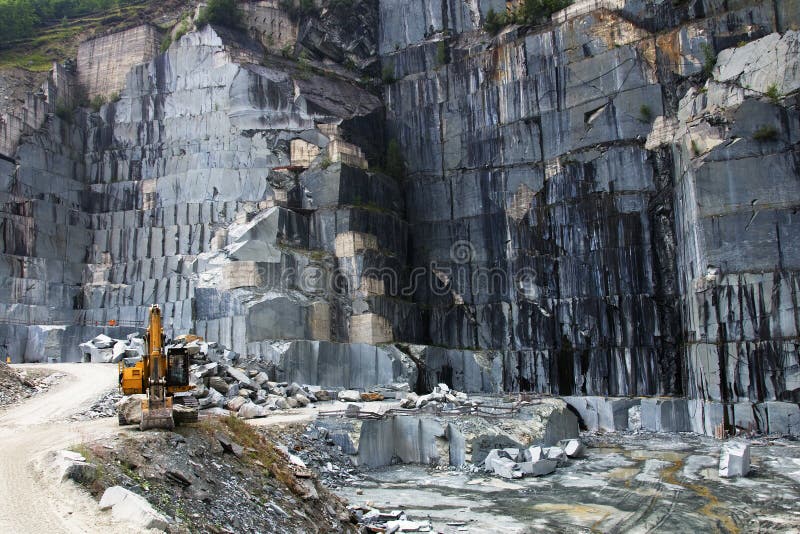Unveiling the Mysteries of Granite Quarrying: Where Stamina and Sophistication Meet
The world of granite quarrying is a world where the raw stamina of nature merges with human artistry to develop structures that stand the test of time with an air of style. From the midsts of quarries to the thorough sprucing up in workshops, the process of changing granite right into architectural wonders is an intricate dance of tradition and technology. As we peer right into the depths of this old craft, we begin to discover the hidden ins and outs that shape the extremely essence of our built setting.
The Origins of Granite Quarrying
In the record of architectural background, the origins of granite quarrying are shrouded in a tapestry of old craftsmanship and geological marvels. Going back to old Egypt and Mesopotamia, the removal of granite from quarries noted the start of a journey that would eventually lead to the production of some of the world's most legendary structures.
Granite quarrying's roots can be traced to the knowledgeable artisans that recognized the stone's resilience and aesthetic allure. Through a combination of primitive tools and large resolution, these early quarry employees discovered granite blocks that would end up being the structure blocks of civilizations.
As civilizations developed, so did the strategies of quarrying granite. The Romans, renowned for their design expertise, created sophisticated techniques for extracting granite to construct monuments, holy places, and roads that stood the test of time.
The tradition of these old quarrying practices remains to form modern design, with granite staying a symbol of toughness and elegance in building and construction jobs around the globe. (granite quarries in south africa)
Devices of the Quarrying Trade
The development of granite quarrying strategies from old worlds to modern times highlights the critical function played by the devices of the quarrying trade in shaping the market's techniques. In ancient times, quarrying devices were rudimentary, usually including knives, hammers, and wedges made from products like bronze or iron. These tools called for considerable workforce and time to extract granite blocks from quarries.

Additionally, the introduction of pneumatic devices and high-powered equipment has actually significantly decreased the physical labor required in quarrying operations, improving worker safety and security and performance. As the quarrying market remains to innovate, the tools of the trade remain at the forefront of driving development and shaping the future of granite removal.
Removing Blocks of Granite
Utilizing precision equipment and advanced methods, the removal of granite blocks from quarries has become an advanced process in the modern quarrying market. Regulated blowing up techniques are after that used to damage apart the granite into convenient sections.

Sprucing Up and Finishing Techniques
To attain a remarkable surface area on granite blocks, skilled artisans employ a collection of precise polishing and completing strategies. After the initial extraction and shaping processes, the granite blocks go through a comprehensive polishing stage to improve their natural appeal and longevity. One usual method utilized in polishing granite is ruby abrasion, where commercial diamonds are used to grind and brighten the rock to a smooth finish. This procedure not only produces a glossy surface area but additionally makes certain uniformity in color and appearance across the granite block.
In addition to sprucing up, ending up anchor methods are applied to additional fine-tune the granite's appearance. By meticulously choosing and applying these polishing and ending up methods, artisans can change raw granite blocks right into splendid pieces that display both stamina and beauty.

Environmental Impact and Sustainability
With the growing focus on environmental consciousness in the market, granite quarrying methods are significantly looked at for their effect on natural deposits and lasting sustainability. Quarrying for granite can have substantial environmental ramifications. The removal procedure usually includes making use of hefty equipment, nitroglycerins, and big quantities of water, causing environment damage, dirt erosion, and water air pollution. In addition, the transportation of granite from quarries to processing facilities generates carbon exhausts, better adding to environmental degradation. granite quarries in south africa.
To mitigate these effects and guarantee sustainability in other granite quarrying, market stakeholders are adopting various procedures. Executing sophisticated innovations to reduce energy intake and water use, redeeming quarried land for ecological remediation, and promoting accountable sourcing practices are some methods being used. Certifications such as the Woodland Stewardship Council (FSC) and the Leadership in Power and Environmental Design (LEED) aid customers identify environmentally friendly granite items.
Final Thought
To conclude, granite quarrying is a procedure that calls for specialized devices and strategies to essence blocks of granite and polish them to a high degree of surface. While the environmental influence of quarrying can be considerable, efforts are being made to enhance sustainability techniques in the sector. Generally, granite quarrying is a fragile equilibrium in between harnessing the stamina and style of this natural stone while lessening its influence on the atmosphere.